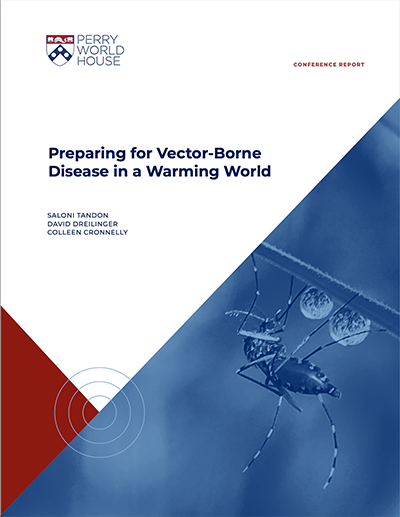Perry World House Report Preparing for Vector-Borne Diseases in a Warming World
Basic Page Sidebar Menu Perry World House

As the world rapidly warms, where and how vectors like mosquitoes and ticks thrive and transmit disease will impact public health. By 2050, some 50% of the global population may be exposed to disease-transmitting vectors. Already, between 2013-2022, 17% more of the world became warm enough and wet enough to support malaria transmission. Dengue fever is expected to intensify where it is already endemic and spread to parts of Asia, Europe, North America, and Australia. Throughout 2023 and into 2024, the Andean region battled record levels of dengue, and in 2023, California saw its first-ever locally transmitted case. As vectors move due to the changing climates they inhabit, they will interact with previously unexposed hosts, opening new possibilities for outbreaks of rare diseases and even the next pandemic.
To address these issues, Perry World House gathered policymakers, academics, public health officials, scientists, and more to discuss how vector-borne diseases can be addresses in a warming world. Read our latest report to learn more.

